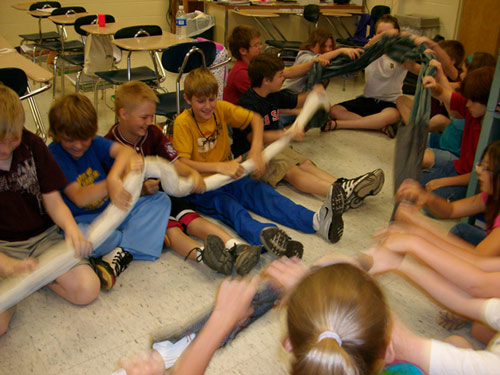

 |  |
|
|
|
Artist in ResidenceFiber Arts for the Classroom Geri Forkner – Multimedia Artist / Instructor Residency program:
$1600 per week, plus travel, room and board. Teacher In Service:Weaving is a heritage craft in Tennessee. With only a little looking one can still find local stories of traditional Tennessee weavers, both men and women. Today, farmers in Tennessee raise cotton, sheep, alpaca and llamas. Factories manufacture textiles of all types. The University of Tennessee system offers courses in many of the diverse aspects of the fiber field. Yet weaving is now considered a lost art. So why teach weaving and fiber arts? Jobs for one. Designing textiles for clothing, home, industry, and hobby markets are just a small sampling of what is available. Scientists are inventing new fibers to perform specific jobs. Textile processes are emerging as art forms. Computers are used in every aspect of the field. The wealth of cultural stories from every time period and every corner of the world is yet another reason to teach fiber art. In this workshop you will learn spinning, weaving, and dyeing processes that will work in your classroom. The processes can be taught from the perspective of language arts, social studies, math, science, art, or multicultural studies. The list of curriculum tie-ins is long. The hands on processes are easy and creative, the tools cheap and readily available. Expensive looms gathering dust in the classroom can be utilized in unique ways that inspire student creativity. Arts Based Service LearningFor centuries families and communities gathered together to make their clothing and household linens by preparing fibers, spinning and dyeing yarns, and weaving or knitting fabrics. Today, the process of making clothing is fragmented – fibers may be grown in India, spun in Guatemala, dyed in the United States and assembled in Vietnam. In the process, we have lost not only the ability to make our own clothing, but also the cultural integrity that goes along with producing a unique, identifying garment from beginning to end. Teaching fiber arts raises an awareness of the issues of globalization, restores an element of cultural pride, and begins a conversation about local- and self-sufficiency. Community-wide, site specific, fiber arts projects have far reaching impacts both on the students that participate and the community that is the recipient. Contact information: Geri Forkner566 Randolph Fridley Rd. Sweetwater, TN 37874 423-337-3958 email: geri (at) weavingschool (dot) com replace the at with “@” and the dot with “.” |